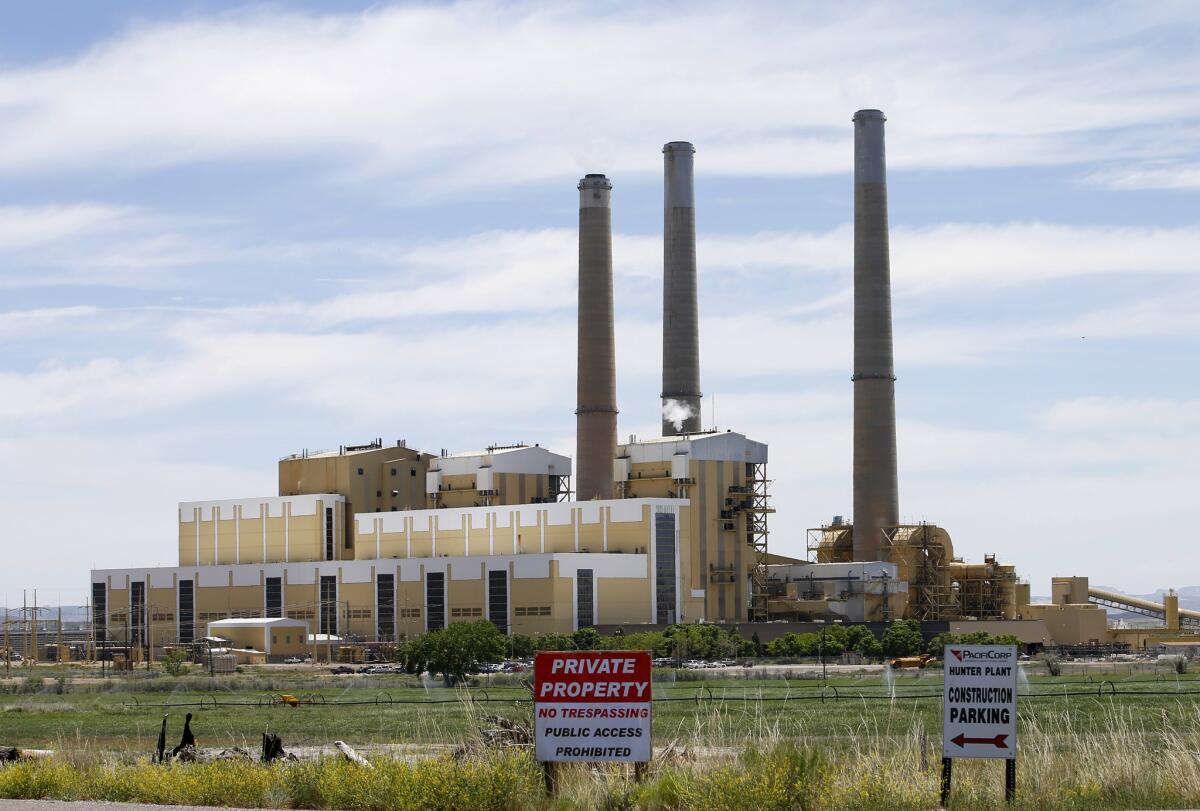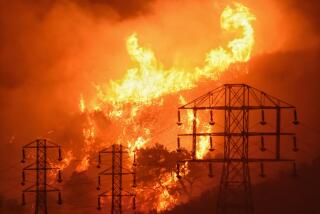California’s regional electricity grid plan on hold

- Share via
Reporting from Sacramento — Gov. Jerry Brown’s plan for a regional electricity grid is being put on hold this year, and lawmakers are no longer expected to consider a measure that would allow California to partner with five other states in buying and selling power.
The governor and state regulators hope more interstate cooperation would eventually help spread clean energy through the region, increasing the market for renewable sources such as solar and wind. But there have been persistent concerns about whether the plan would undermine California’s environmental efforts or reduce its control over the grid, a residual worry a little more than a decade since the state’s energy crisis.
“While very significant progress has been made ... there remain some important unresolved questions that would be difficult to answer in the remainder of this legislative session,” Brown wrote in a letter to top lawmakers Monday.
Read more coverage about the final weeks of the legislative session. »
The plan would have allowed PacifiCorp, a utility that operates in Utah, Wyoming, Idaho, Oregon, Washington and parts of Northern California, to merge with California’s electricity grid. The integration would have saved customers $1.5 billion a year by 2030, according to the California Independent System Operator, or Cal-ISO, a Folsom-based nonprofit that manages electricity markets and transmission for most of the state.
Regulators argue that a regional approach would make it easier to import and export clean energy. For example, when the wind blows in Wyoming, the electricity could power homes in California, and when the sun shines in California, it could supply the electricity to other states.
Although legislation passed last year included a provision expressing support for the big-grid idea, lawmakers would need to approve a new measure to allow the state to move forward. That’s now on hold until next year, and in the meantime Brown said his administration would keep working with lawmakers.
“The goal is to develop a strong proposal that the Legislature can consider in January,” he wrote in his letter. “I’m confident that by working together we can get the job done.”
Expansion of Cal-ISO’s authority would likely require a structuring of the agency’s governing board to include members from other states, meaning California would possibly surrender some of its control.
That’s caused skepticism from state legislative leaders, who wrote in a February letter that Brown must not “cede authority of our state’s cutting edge clean energy and climate policies to others who do not have the same strong commitment and legal framework to reduce climate pollution and promote clean energy.”
Last week, state Senate leader Kevin de León (D-Los Angeles) said he still had concerns.
“Our climate leadership in California cannot be undermined,” he said. “We can’t go two, three, four steps backwards to reach a deal for regionalization.”
Another issue is that PacifiCorp, a subsidiary of Berkshire Hathaway Energy, currently produces 62% of its electricity from coal and 15% from natural gas.
Although the utility plans to retire some of those coal plants in the coming years, environmental groups such as the Sierra Club fear California would end up importing more electricity from dirty sources rather than clean ones. A law passed last year, SB 350, requires the state to produce half of its electricity from renewable sources by 2030.
The plan to work with PacifiCorp has “raised a lot of red flags for the state and the region,” said Kathryn Phillips, California director for the Sierra Club, and she praised Brown for delaying the push for new legislation.
“His letter today confirms that he understands California must take the time it needs to design a regional system that stays true to our values and grows our progress,” she said in a statement.
Don Furman, the manager of Fix the Grid West, an advocacy group for some environmental organizations and solar companies that support regionalization, said he’s confident a plan can be developed without weakening renewable-energy goals.
“It’s just a matter of working out the details,” Furman said.
There has also been anxiety from California labor groups, who fear that regionalization would encourage new energy projects to be built in other states where unions are weaker.
Cesar Diaz, the legislative director for the State Building and Construction Trades Council, said his organization was pleased there would be a delay.
“It is important regionalization be done in a way that hundreds of thousands of jobs that would result from SB 350 would not be lost and in a way that California does not lose control of its energy policy,” he said.
chris.megerian@latimes.com and ivan.penn@latimes.com
Penn reported from Los Angeles
Twitter: @chrismegerian and @ivanlpenn
ALSO:
State electric grid expansion would add coal-heavy utility
Brown wants to resurrect a plan to expand the state’s power grid, but some say it’s not that simple
Study says expansion of California’s electric grid would save consumers $1.5 billion
Updates on California politics
UPDATES:
2:05 p.m. This article has been updated with reactions from the Sierra Club and Fix the Grid West.
This article was originally published at 10 a.m.












